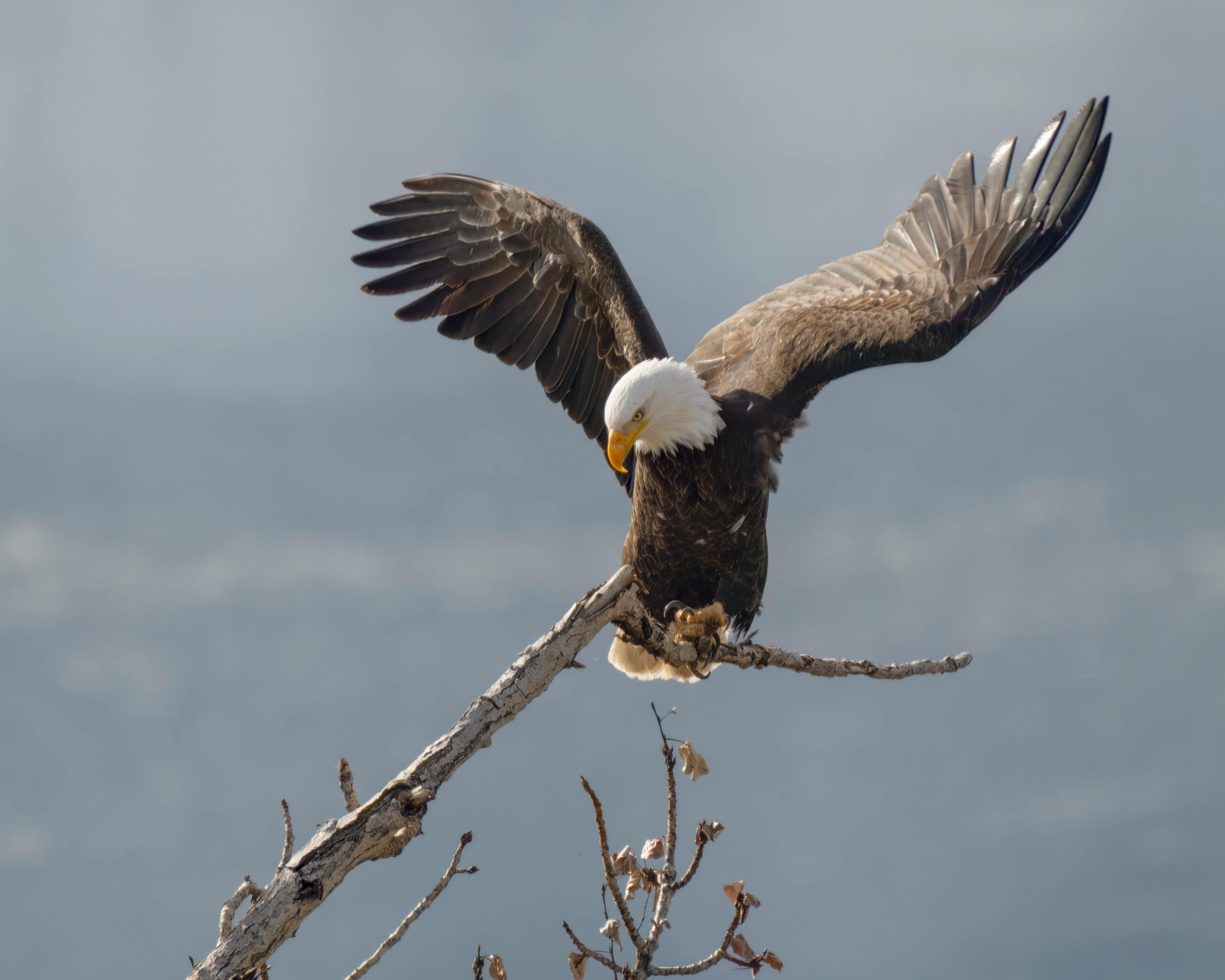Yes, there are bald eagles in North America. As of 2019, there are an estimated 316,700 bald eagles in the lower 48 states, excluding the Southwest, according to the U.S. Fish and Wildlife Service. This is more than four times greater than the 2009 estimate for the same area. The bald eagle population is increasing rapidly, and they can be found in many states along coasts, rivers, lakes, and reservoirs, particularly during the winter months.
Bald Eagles: Apex Predators of North America
Bald eagles are birds of prey and are known for their white-feathered heads, chocolate-brown body and wings, and their diet mainly consists of fish. However, they are also opportunistic feeders and will eat other birds, reptiles, amphibians, invertebrates, and mammals if available. In some areas, reptiles may become regular prey, especially in warm areas such as Florida where reptile diversity is high. Turtles are perhaps the most regularly hunted type of reptile, and in coastal New Jersey, 14 of 20 studied eagle nests included remains of turtles.
The Comeback of Bald Eagles
 Image source: Pexels by Frank Cone
Image source: Pexels by Frank Cone
Bald eagles were once endangered due to hunting and pesticides, but they have flourished under protection and their numbers have increased significantly. They are protected by at least three laws, including the Bald and Golden Eagle Protection Act, the Migratory Bird Treaty Act, and the Lacey Act. Despite their recovery, bald eagles still face many human-related threats, such as collisions with man-made structures and vehicles, lead poisoning, electrocution, unintentional capture in leg-hold traps, and illegal shooting.
Bald Eagles’ Habitat and Distribution
Bald eagles can be found in various habitats across North America, including coasts, rivers, lakes, and reservoirs. They are particularly abundant during the winter months when they congregate near open water sources to feed on fish and other prey. The map below shows the distribution of bald eagles in the United States:

As you can see, bald eagles are found throughout the continental United States, with the highest concentrations in Alaska, the Pacific Northwest, and the Great Lakes region.
Bald Eagles’ Diet and Feeding Habits
Bald eagles are opportunistic feeders and will consume a variety of prey, including:
- Fish (their primary food source)
- Birds (such as ducks, geese, and other waterfowl)
- Reptiles (including turtles, snakes, and lizards)
- Amphibians
- Invertebrates
- Small mammals (such as rabbits, squirrels, and rodents)
They often hunt by soaring over the water and diving to catch fish, or by stealing prey from other birds, such as ospreys. Bald eagles are also known to scavenge for food, such as carrion or food scraps.
Conservation Efforts and Threats
Bald eagles were once listed as an endangered species, but their population has since recovered thanks to conservation efforts and the banning of the pesticide DDT. However, they still face a variety of threats, including:
- Collisions with man-made structures and vehicles
- Lead poisoning (from ingesting lead ammunition or fishing tackle)
- Electrocution (from power lines)
- Unintentional capture in leg-hold traps
- Illegal shooting
Ongoing conservation efforts, such as habitat protection, monitoring, and public education, are crucial to ensuring the continued recovery and long-term survival of bald eagles in North America.
Conclusion
In conclusion, bald eagles are a common sight in North America, particularly near water sources, and their population is increasing. They are opportunistic feeders and will eat a variety of prey, including fish, birds, reptiles, amphibians, invertebrates, and mammals. While they are protected by several laws, they still face many human-related threats and require ongoing conservation efforts to ensure their continued recovery.
References:
– Journey North: Bald Eagle History
– U.S. Fish and Wildlife Service: Eagles Across America
– All About Birds: Bald Eagle
– All About Birds: Bald Eagle Range Map
– Wikipedia: Bald Eagle


